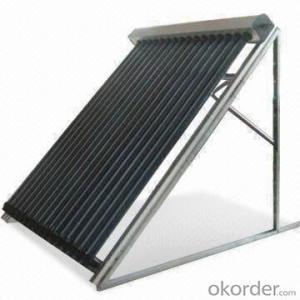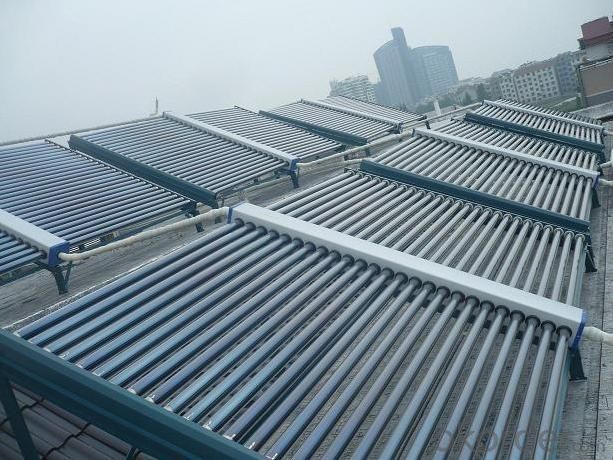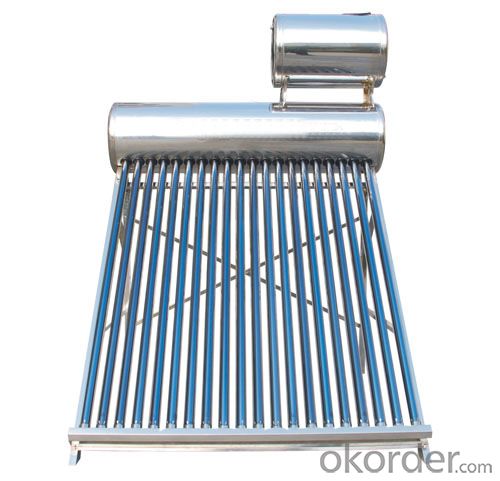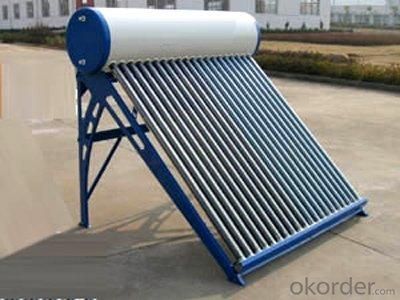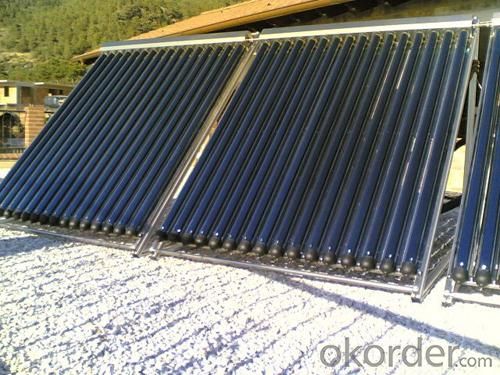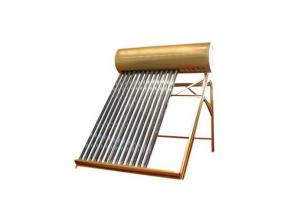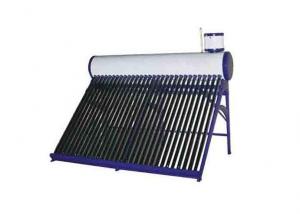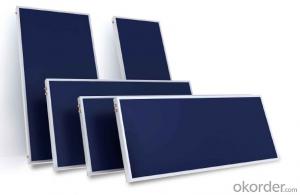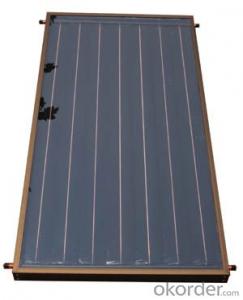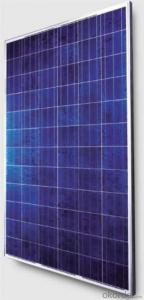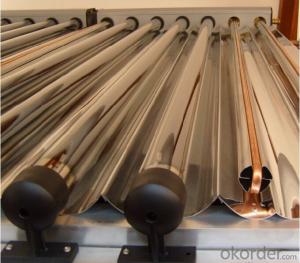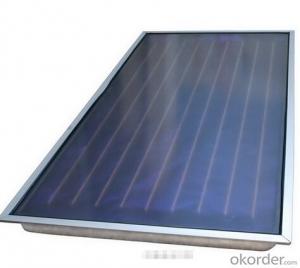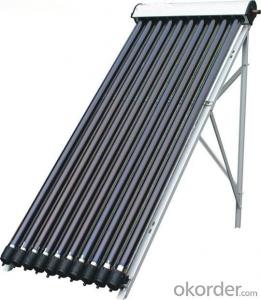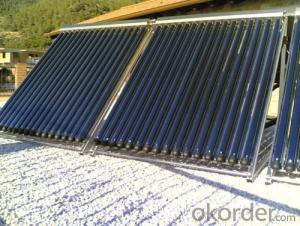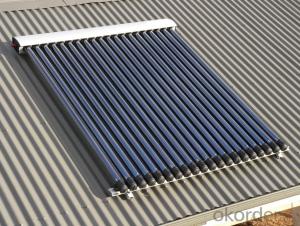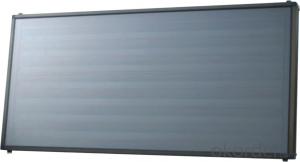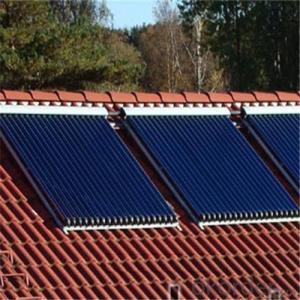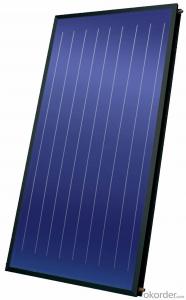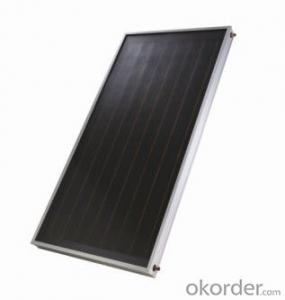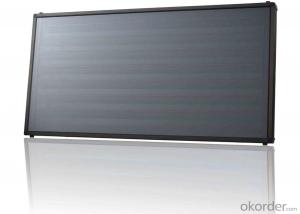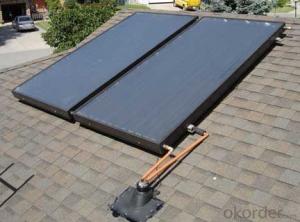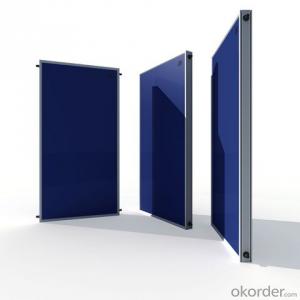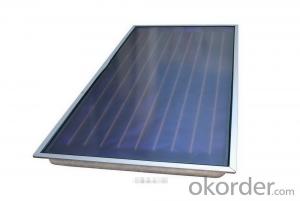Inflatable Solar Collectors with High Power Output Heat Pipe Vacuum Tubes
- Loading Port:
- China main port
- Payment Terms:
- TT OR LC
- Min Order Qty:
- 5 set
- Supply Capability:
- 10000 set/month
OKorder Service Pledge
OKorder Financial Service
You Might Also Like
Specifications
manifold (inner) | red copper |
manifold (exterior) | aluminum alloy |
glass tube dimensions | 58mm * 1800mm |
daily efficiency | ≥55% |
heat preservation | 72 hours |
hail resistance | 25mm |
max pressure | 7 bar |
coating of vacuum tube | ALN/AIN-SS/CU |
heat pipe | anti-freezing > -35 degree |
certificate | Solar Keymark, EN12975,SRCC |
Serious Product
Models | L*W*H mm | Vacuum tube | Power output | Efficiency | Header mm | Frame | container loading 20FT/40HQ sets | Gross Weight kg |
SHC-8 | 1917*910*133 | 58*1800*8pcs | 939W | 0.668 | Φ35/1.0 | AL alloy | 185/445 | 27 |
SHC-10 | 1917*1130*133 | 58*1800*10pcs | 1189W | 159/385 | 33 | |||
SHC-12 | 1917*1350*133 | 58*1800*12pcs | 1440W | 149/358 | 40 | |||
SHC-15 | 1917*1680*133 | 58*1800*15pcs | 1815W | 120/290 | 49 | |||
SHC-18 | 1917*2010*133 | 58*1800*18pcs | 2191W | 100/242 | 59 | |||
SHC-20 | 1917*2230*133 | 58*1800*20pcs | 2442W | 87/210 | 66 | |||
SHC-22 | 1917*2450*133 | 58*1800*22pcs | 2692W | 83/202 | 72 | |||
SHC-24 | 1917*2670*133 | 58*1800*24pcs | 2943W | 77/188 | 79 |
Packaging & Delivery
Packaging Details: | Exporting Carton with big foaming protection |
Delivery Detail: | In 10-15 days |
Loading Quantity
Model | Tube | Tube Q.T.Y | Loading Q.T.Y/40HQ |
GSC15 | 58*1800mm | 15pcs | 315sets |
GSC18 | 58*1800mm | 18pcs | 265sets |
GSC20 | 58*1800mm | 20pcs | 248sets |
GSC22 | 58*1800mm | 22pcs | 225sets |
GSC25 | 58*1800mm | 25pcs | 200sets |
GSC30 | 58*1800mm | 30pcs | 168sets |
Principle of solar collector:
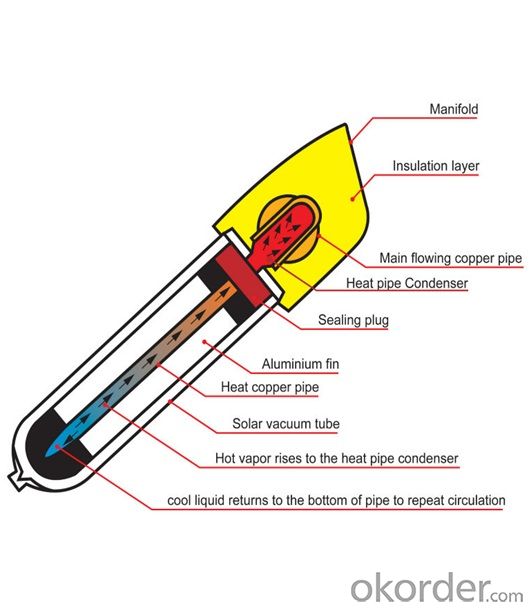
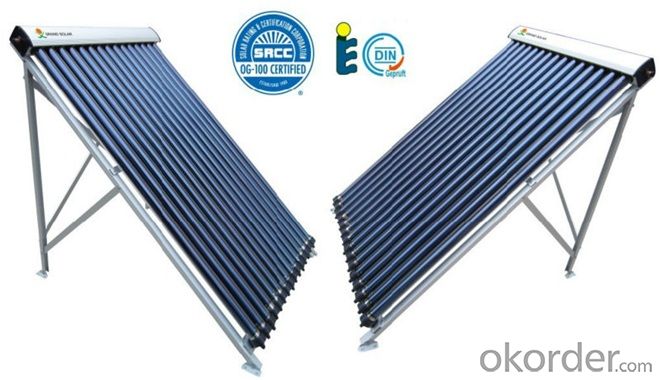
Solar collector details
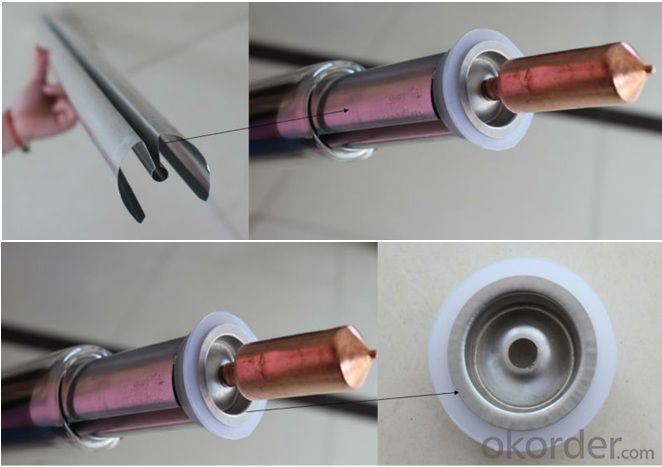
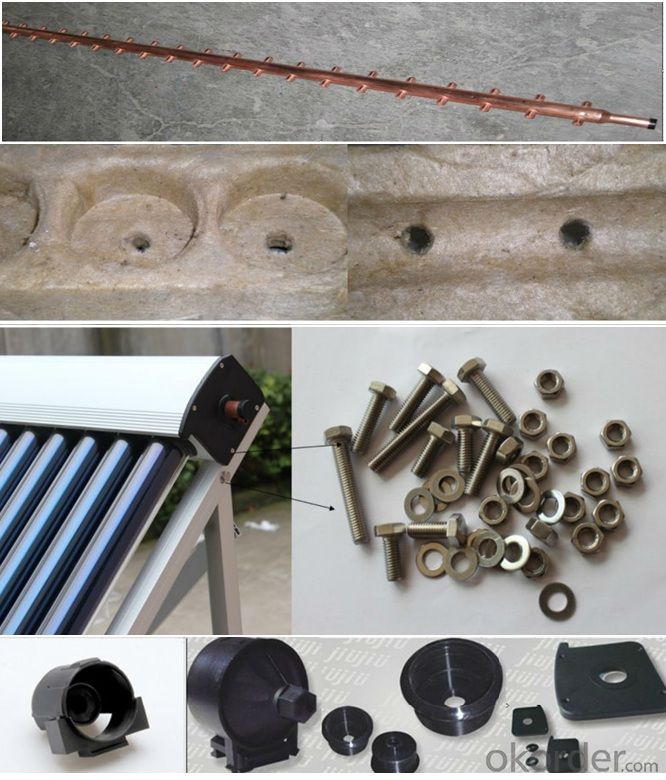
- Q: Can solar collectors be used for heating data centers?
- Yes, solar collectors can be used for heating data centers. Solar thermal systems can capture and convert solar energy into heat, which can then be used to provide heating for various purposes, including data centers. This sustainable and renewable energy source can help reduce the reliance on traditional heating systems, leading to cost savings and environmental benefits for data centers.
- Q: Can solar collectors be used for generating electricity on smartwatches?
- No, solar collectors are typically not suitable for generating electricity on smartwatches due to their limited surface area and the relatively high power demands of electronic devices like smartwatches.
- Q: How long does it take to install a solar collector system?
- The installation time for a solar collector system can vary depending on the size and complexity of the system, as well as the specific circumstances of the installation site. On average, a residential solar collector system can take anywhere from a few days to a couple of weeks to install. However, larger commercial or industrial systems may take longer, potentially several weeks or even months. It is always best to consult with a solar installation professional who can assess your specific needs and provide a more accurate estimate.
- Q: How do solar collectors perform in areas with high humidity?
- Solar collectors can still perform effectively in areas with high humidity. However, excessive moisture in the air can slightly reduce their efficiency by causing some condensation on the surface of the collectors. Regular maintenance and cleaning can help mitigate any negative impact and ensure optimal performance in such conditions.
- Q: Can solar collectors be used in conjunction with other renewable energy sources?
- Yes, solar collectors can be used in conjunction with other renewable energy sources. Many renewable energy systems, such as hybrid solar-wind or solar-hydro, combine solar collectors with other sources to enhance energy production and reliability. This integrated approach allows for a more diverse and sustainable energy mix, maximizing the benefits of multiple renewable sources.
- Q: What is the role of insulation in a solar collector system?
- The role of insulation in a solar collector system is to minimize heat loss and maximize heat gain within the system. Insulation helps trap and retain the solar energy absorbed by the collectors, preventing it from escaping and keeping it available for heating purposes. It also reduces thermal losses to the surroundings, improving the overall efficiency and performance of the system.
- Q: How do solar collectors impact job creation?
- Job creation in various sectors of the economy is significantly influenced by solar collectors. Skilled workers are required for the installation and maintenance of solar collectors, which in turn creates job opportunities for engineers, technicians, and construction workers. These professionals are responsible for designing, installing, and repairing solar panels, directly contributing to job creation in the renewable energy industry. Employment opportunities are also generated through the production and manufacturing of solar collectors. Specialized factories produce the various components of solar panels, resulting in job creation for workers involved in manufacturing solar cells, frames, inverters, and other necessary components. Sales and marketing sectors also experience job creation due to the increased demand for solar collectors. As more individuals and businesses opt for solar panels, the need for sales representatives and marketers arises to educate and promote the benefits of solar energy. These professionals play a crucial role in expanding the adoption of solar collectors, leading to more job opportunities. Furthermore, the growth of solar collectors indirectly creates employment in related industries. For instance, the installation of solar collectors often requires electrical work, necessitating the expertise of electricians. This leads to additional employment opportunities for electricians who can connect the solar panels to the electrical grid. Additionally, as the solar industry continues to expand, research and development activities become essential. This results in job creation for scientists, engineers, and researchers focused on enhancing the efficiency and effectiveness of solar collectors. Overall, solar collectors have a positive impact on job creation by providing employment opportunities in the renewable energy industry, manufacturing sector, sales and marketing, as well as indirect job creation in related fields. With the world shifting towards sustainable energy sources, the demand for solar collectors will continue to grow, contributing to further job creation.
- Q: Can solar collectors be used for heating mosques?
- Yes, solar collectors can be used for heating mosques. Solar thermal collectors can harness the sun's energy and convert it into heat, which can then be used to warm the interior spaces of mosques. This eco-friendly and sustainable solution can significantly reduce energy costs and carbon emissions associated with traditional heating methods.
- Q: Are there any size limitations for solar collectors?
- Yes, there are size limitations for solar collectors. The size of a solar collector is determined by various factors such as the available space, the amount of sunlight in the area, and the specific requirements of the system. However, it is possible to create larger solar collectors by combining multiple smaller ones or using advanced technology to increase their efficiency.
- Q: How are solar collectors different from solar panels?
- Solar energy can be harnessed through the use of solar collectors and solar panels, although their purposes and functionalities differ. Solar collectors are specifically designed to capture and convert thermal energy from the sun into heat. These collectors are commonly used to heat water or air in residential, commercial, or industrial settings. They consist of tubes or pipes that circulate a heat transfer fluid, like water or antifreeze, absorbing the sun's heat and transferring it to a storage tank or directly to the desired application. Solar collectors are mainly utilized in solar water heating or space heating systems. On the other hand, solar panels, also known as photovoltaic (PV) panels, are used to directly convert sunlight into electricity. They are composed of multiple solar cells made of semiconductor materials, such as silicon, that generate electricity when exposed to sunlight. Solar panels are primarily used for generating electricity in residential, commercial, and utility-scale solar power systems. They can be mounted on rooftops, integrated into building materials, or installed as ground-mounted arrays. In conclusion, solar collectors are designed to capture and convert solar energy into heat, whereas solar panels are used to directly convert sunlight into electricity. Both technologies have important roles in harnessing solar energy and are employed in various applications to reduce reliance on conventional energy sources and promote sustainability.
Send your message to us
Inflatable Solar Collectors with High Power Output Heat Pipe Vacuum Tubes
- Loading Port:
- China main port
- Payment Terms:
- TT OR LC
- Min Order Qty:
- 5 set
- Supply Capability:
- 10000 set/month
OKorder Service Pledge
OKorder Financial Service
Similar products
Hot products
Hot Searches
Related keywords
